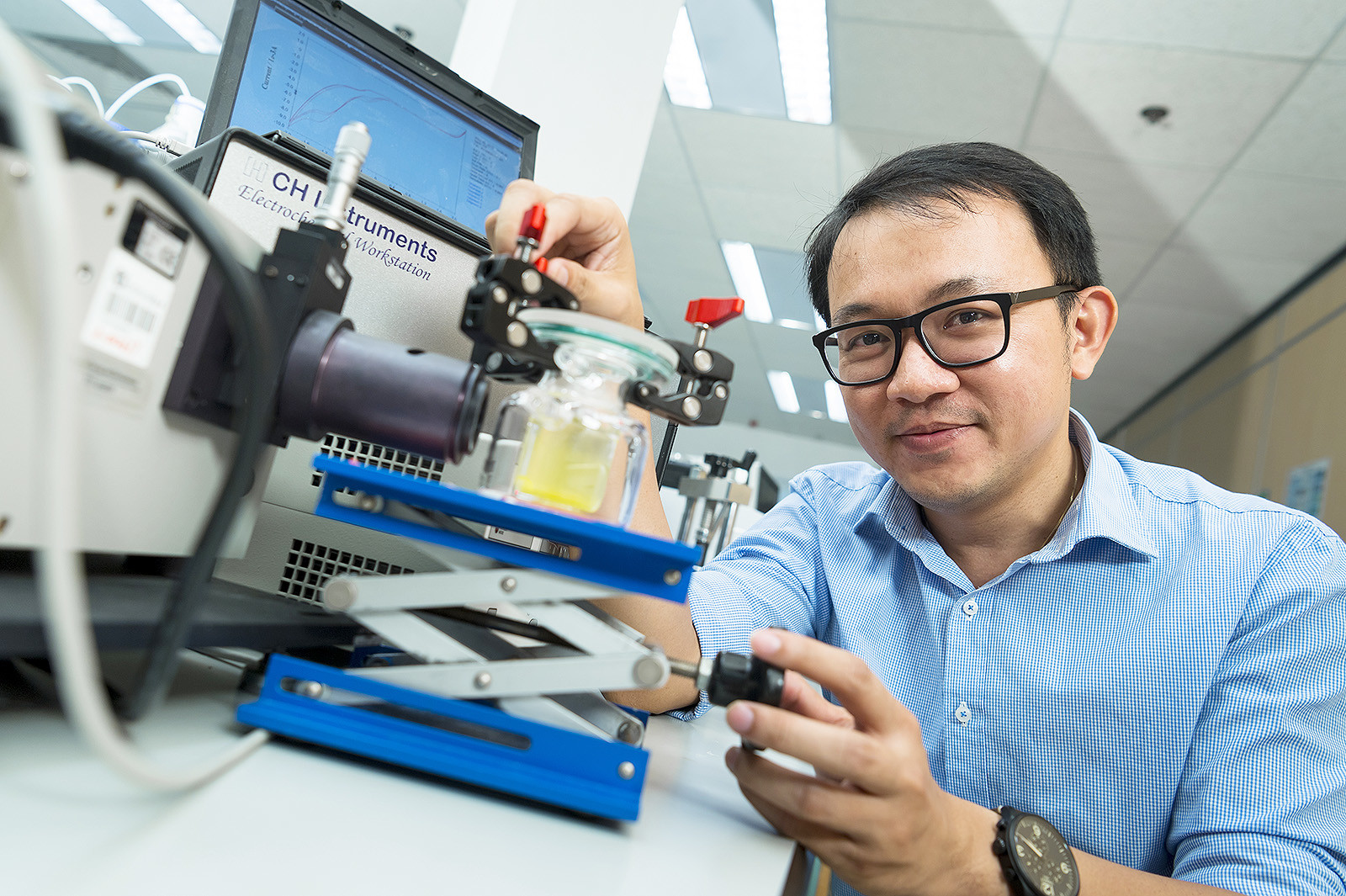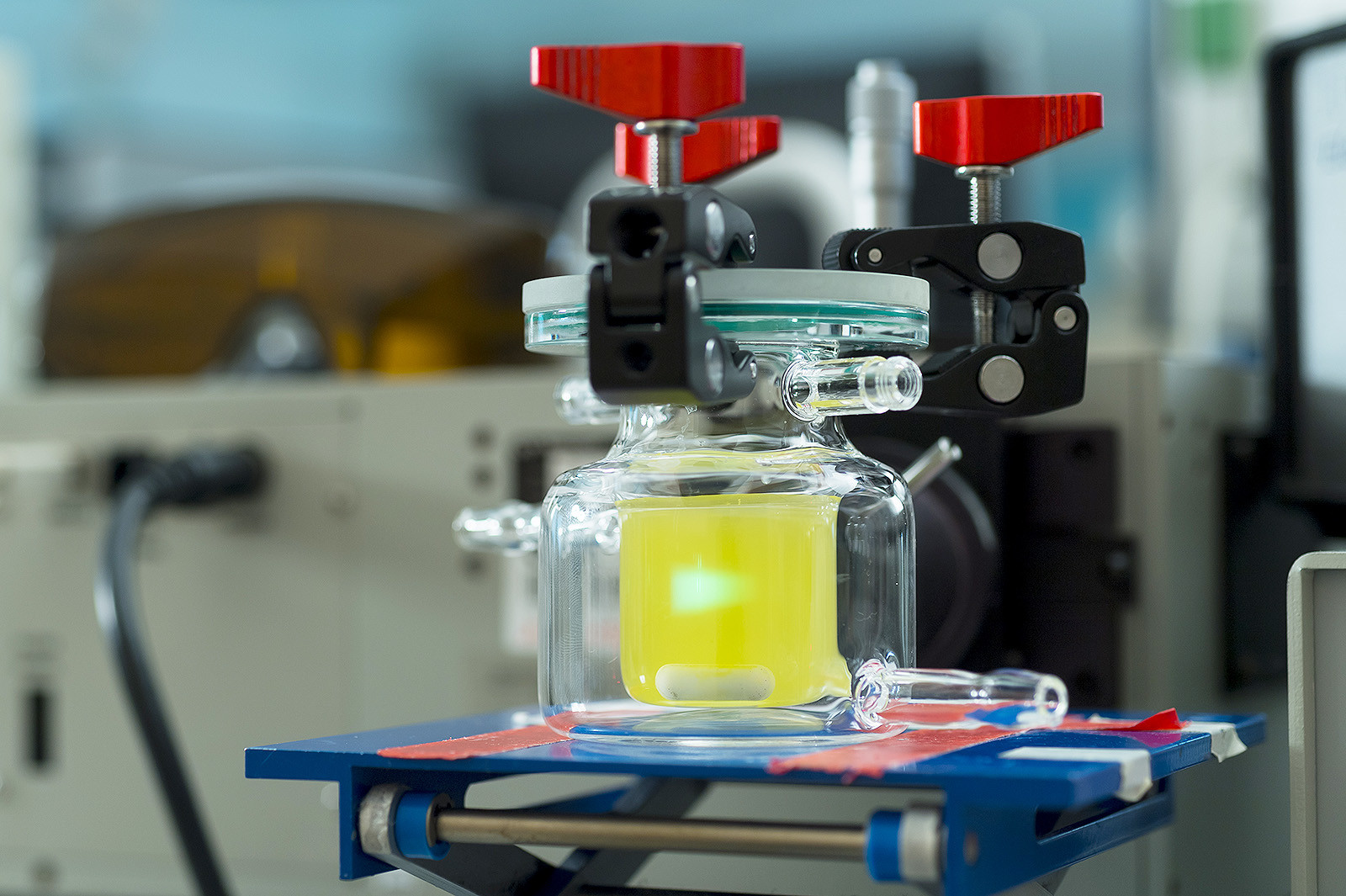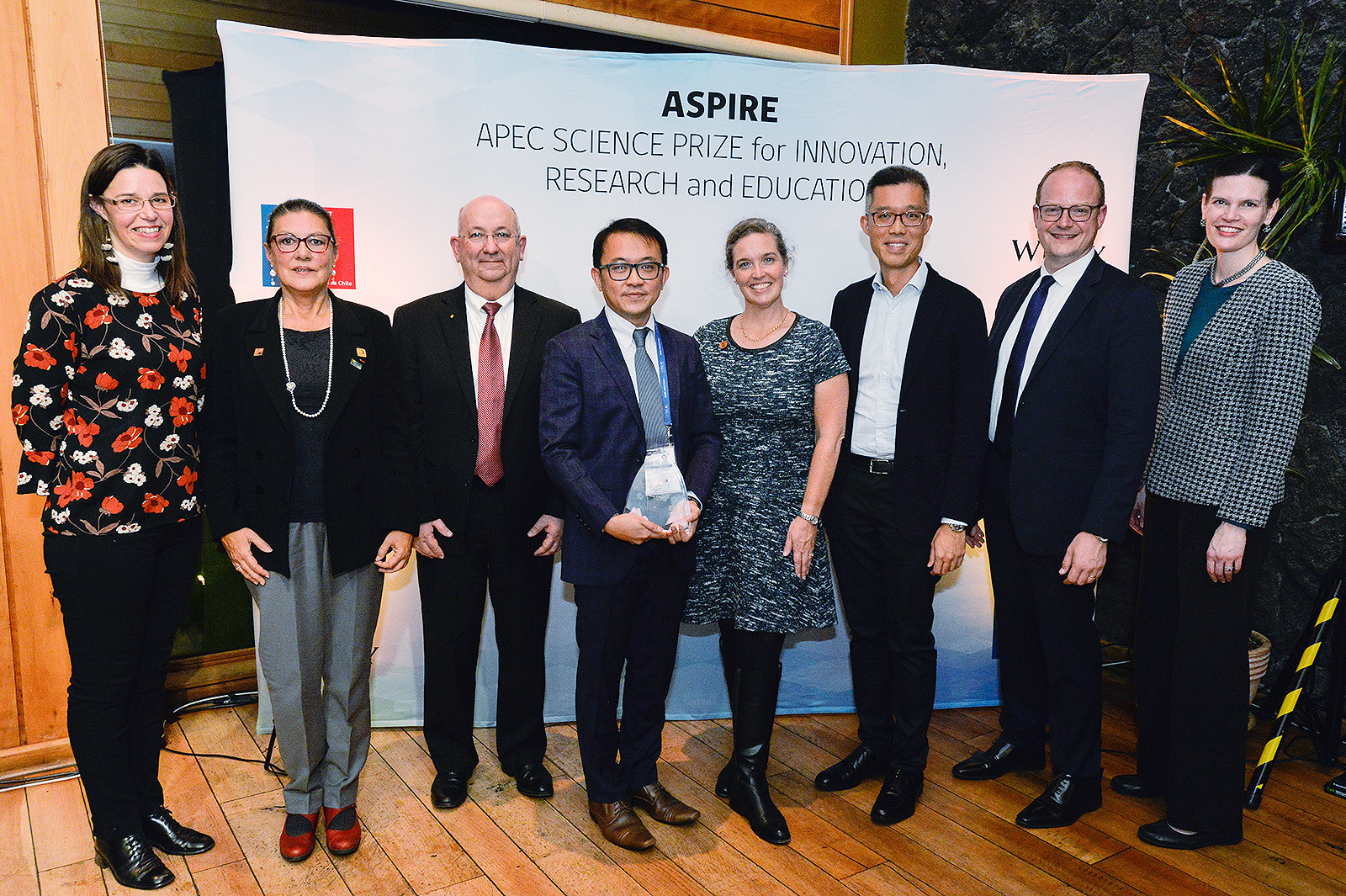CityU scientist’s zero-pollution technology for generating renewable energy awarded APEC Science Prize
Kenix Wong
The contributions of an environmental scientist of City University of Hong Kong (CityU) to the field of photoelectrocatalysis have made him the only winner of the 2019 Asia-Pacific Economic Cooperation (APEC) Science Prize for Innovation, Research and Education (ASPIRE).
The award-winning research of Dr Ng Yun-hau, Associate Professor of the School of Energy and Environment at CityU, involves the application of a new zero-pollution technology that can help to resolve the two issues of energy shortage and pollution.
He uses sunlight to split water into clean hydrogen to generate renewable energy and applies photoelectrocatalysis to enhance the conversion efficiency of solar energy. No pollution is caused during the process.
Dr Ng received his award at the APEC Policy Partnership for Science, Technology and Innovation (PPSTI) Meeting held in Chile last month.
“I feel very honoured to represent Hong Kong and CityU to receive this prize. It is a great encouragement to me and my research team. We will continue to work hard on our road for rigorous research, aiming to make more achievements to contribute to society,” he said.
Over the past 10 years, Dr Ng has been focusing his research on improving the semiconductor used for photoelectrocatalysis to enhance its conversion efficiency. It is well known that generating energy creates pollution, and that solar power is one of the richest sources of new clean energy for humans.
A semiconductor put into water under sunlight produces artificial photosynthesis, a process that produces hydrogen.
“And when using hydrogen to generate energy, the only by-product is water. Therefore, no pollution will be caused either during the process of generation or application. However, it can help to resolve the crisis of energy shortage,” Dr Ng said. In addition, titanium oxide, the material for producing semiconductors, can be obtained from the sand in the sea or river bed. Oxidised or rusted copper and iron can also be used as materials to produce semiconductors for photoelectrocatalysis, which accords with the principles of environmental protection and the economy.
Dr Ng also collaborates with other academics on research to convert waste water into energy by splitting it to produce hydrogen. As waste water contains large volumes of organic materials, splitting it will not only produce hydrogen but also offer treatment for waste water. The conversion process will bring dual benefits for us.
Dr Ng currently focuses his studies on the fundamental theory of photoelectrocatalysis, with the aim of making a breakthrough in improving the conversion efficiency. It is expected that when the technology can be transferred for commercialisation, it can be used for fuel cells for laptops and mobile phones, and can also be applied to fuel cell vehicles in the future.
“It is important for humans to resolve the problems of energy shortage and the greenhouse effect. As a researcher, I hope that I can make contributions to this by developing renewable energy. And that’s the reason for me to focus my research in this discipline,” he said.
Dr Ng joined CityU in 2018. Since starting his research on photoelectrocatalysis in 2006, he has published about 130 academic papers in leading journals. His work has been featured nine times as cover stories. In addition, he has received numerous awards, including being the first non-Japanese to win the Honda-Fujishima Prize in 2013, and was presented the Distinguished Lectureship Award by the Chemistry Society of Japan in 2018.
The annual ASPIRE Prize aims to promote economic growth, trade, investment and sustainable development for member countries of APEC. The winner will receive a USD25,000 prize.


